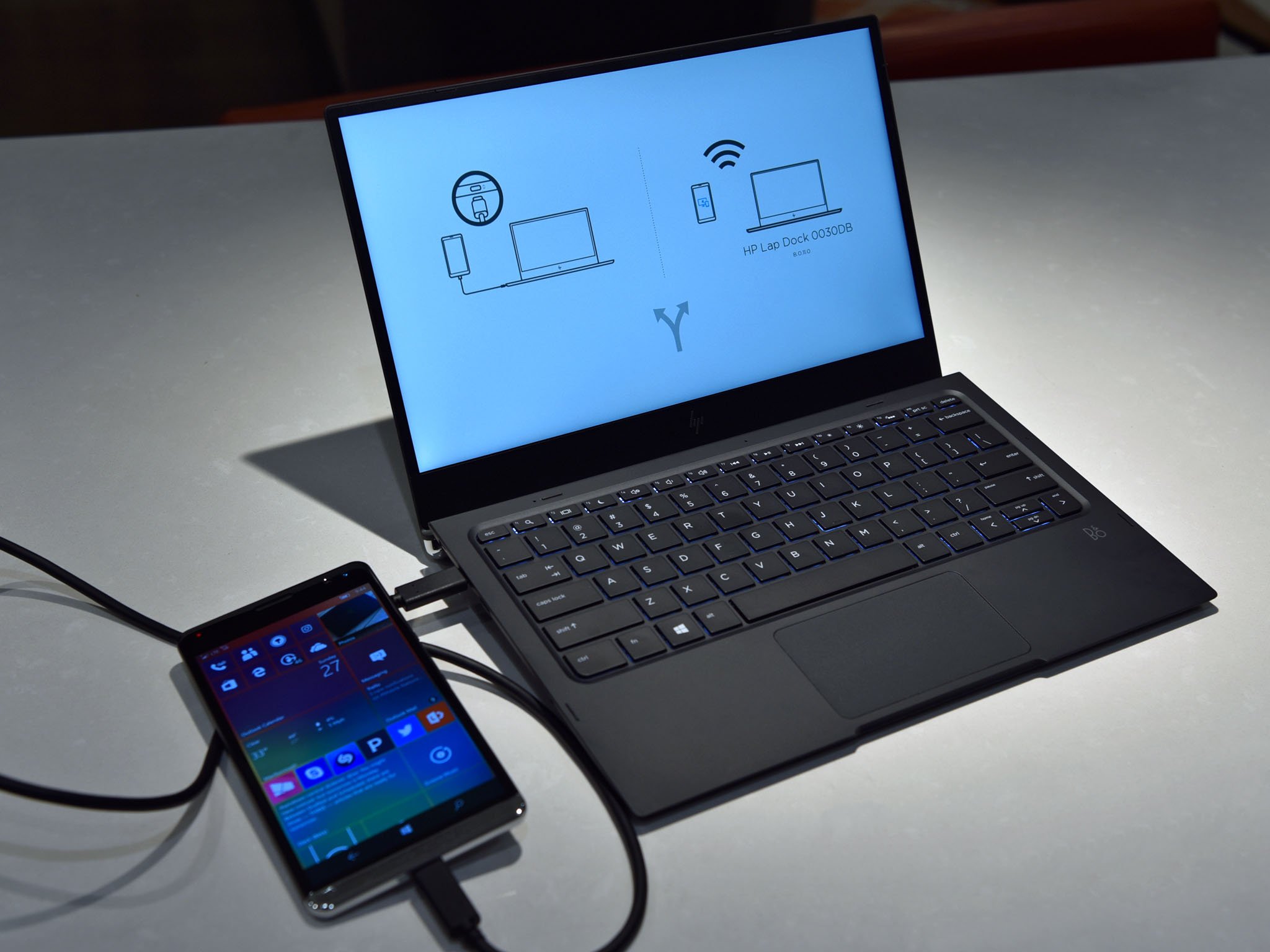
From Daniel Rubino's review:
For a display, the Lap Dock features a "nearly borderless" matte 12.5-inch LED-backlit FHD (1920 x 1080) screen that ramps up to an ample 300 nits. The display is fantastic. It's bright enough, renders text very clearly, and because it is anti-glare it is ideal for writing and work.
For audio, there are integrated Bang & Olufsen stereo speakers that can get quite loud for such a small device. It's quite impressive and suitable for presentations. There are also integrated noise canceling microphones and a traditional stereo headphone jack. There is no webcam, however making Skype calls oddly neutered.
I'd agree from my own hands-on a few months ago - the hardware is terrific and the use of a full 1080p screen bests all the other 'lap dock'-style accessories out there.
Daniel makes reference to 'Proximity Connect', a feature of Continuum under the Creators Update, set to hit production devices in the Spring:
In an ideal world, you would keep the HP Elite x3 in your pocket, open the lid on the Lap Dock, and begin typing. That vision is almost here today. Almost. Microsoft is bringing a feature to Continuum in early 2017 that detects Continuum-enabled hardware to auto-connect. That will solve the 'opening the lid and connecting' scenario described above. For now, however, you must manually connect to the Lap Dock wirelessly through the Continuum app. It 's not hard, but it is an extra step.
Another issue is the wireless Miracast experience with Continuum. Due to bandwidth, Continuum functions only at 30 FPS when wireless, versus 60 FPS when wired. It makes a huge difference. While a wireless connection works in the technical sense, the wired one is leaps and bounds faster, more consistent, and just works better.
Having used wireless Continuum a numbers of times, I'd tend to agree. It's fine for media-centric activities, such as setting off YouTube videos on a large HDMI/Continuum monitor, but for anything interactive the lag and refresh rates really start to hurt. So you have to plug in:
From my experience, the HP Lap Dock wired (since wireless is not a good experience) will net around 4 to 5 hours of real time usage while trickle charging the phone. It's not terrible, but I think some of us were expecting somewhere north of 8 or 10 hours since there is no CPU, RAM, or internal storage for the Lap Dock's battery to power.
I think it's best to think of the Lap Dock as something you can use in a pinch when traveling or at a coffee spot, where you want a larger display and a full keyboard. However, it is not something you will be using on battery for extended periods of time. You can, of course, carry around the AC charger and power everything that way… but at this point you should probably be considering a real laptop.
Daniel sums up the HP Lap Dock with:
The Lap Dock and Elite x3 excel at lighter experiences like Office (Word, PowerPoint, etc.), email, Twitter, and the like. If you need to sit down and write out something more than a few paragraphs, the Lap Dock's keyboard is far more accommodating than the little digital one on the Elite x3. Even the Edge browser was a better experience than what I expected.
Nonetheless, the Microsoft Store's app selection, as always, presents issues. I rely on Slack for work, for instance, and the lack of a Continuum-compatible UWP version of the app hurts.
If you are torn between choosing an Elite x3 and Lap Dock or a new "real" laptop, I think it's best you go for the laptop. The Elite x3 and Lap Dock do have a purpose today for those who need light, mobile computing, but for consumers (or prosumers) this technology is only nearing a minimum acceptable mark.
A good overview of the Lap Dock in action in real world use. I do have questions about exactly how flexible those ports are though, plus there must be some way of getting Skype running properly, even if the X3 itself has to be propped up.
Finally, I'd like to experiment with a wider range of Windows 10 Mobile applications and see how the 30fps and 60fps refresh rates impact use. Could I survive with just a Lumia 950/XL or Elite X3 and the HP Lap Dock for general purpose day to day computing? Watch this space.
PS. I'll have quite a bit to say on the question of price too. The only UK price I could find was Clove, at £595. For something with no processor, RAM, fans, or disks, that's crazy pricing from HP. Or maybe the real price, to a company, buying these in bulk and ex-VAT, is quite a bit less and they just don't expect consumers to get involved?
